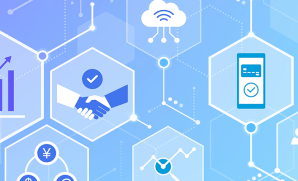While Automation could be considered a strategic advantage, successful will be those who do not just consider it a good idea but a necessity. In our past couple of blogs, we have explored what SAP BTP is, some best practices and use cases, and how its Business AI capabilities support clean core ways to be agile and innovative. This blog will explore critical challenges that global enterprises encounter in capitalizing on automation and how SAP users achieve massive value through SAP Build Process Automation and AI.
Why is Automation essential?
Forrester’s 2023 predictions included that a third of companies were looking to use data insights to transform business processes this year. 2023 also saw slower Automation due to a lack of skilled developers and project managers in low-code development, AI, and project management. This is why 2024 promises to be an exciting year.
Forrester’s 2024 predictions include 10% of operational processes being powered by LLMs (Large Language Models) and AWAs (Autonomous Workplace Assistants or ‘digital coworkers’)[1]. Findings from IDC have also highlighted challenges around embracing Automation, primarily in three areas:
- Leadership blind spots due to organizational siloes: Organizational silos and the absence of clear metrics can hamper the effective implementation of Automation. These issues often lead to fragmented efforts and a lack of cohesive strategy across the organization.
- Integration with complex IT landscapes with scattered, unorganized data: Organizations need a flexible, extensible, and open digital business platform to ensure seamless connectivity between systems and data sources. Also, lacking context and integration of data silos makes it challenging to derive meaningful insights and automate processes effectively.
- Adoptive barriers due to skilled developers or cultural resistance to change: While the lack of digital skills within the workforce is a significant barrier, practical training and adoption of automation technologies within business units while keeping strategic governance centralized is also crucial and challenging.
This is where I think SAP BTP and SAP Build Process Automation step in as obvious solutions for most SAP customers —with great results!
How SAP BTP capitalizes on Automation in 2024
In my observation, SAP BTP and SAP Build Process Automation play a critical role in addressing the automation trends highlighted by Forrester.
The primary roles are:
- Providing the tools and capabilities to transform business processes through data insights: The platform’s holistic approach combines data management, analytics, and AI to enable deeper insights and more informed decision-making. According to a study participant in an IDC report, organizations can significantly reduce process steps, as reported with an 80% reduction in finance operations reporting steps.
- Enabling widespread adoption of RPA and intelligent Automation: SAP Build also provides robust tools for process automation, including low-code development environments that empower business units to create and implement automation solutions. This decentralization of development enables faster adoption and execution of these initiatives. Furthermore, given that SAP BTP supports the integration of RPA and other automation technologies through the SAP Integration Suite, SAP, and third-party systems are always seamlessly connected, facilitating intelligent Automation across the enterprise.
- Addressing skills gaps with low-code development: By enabling business users to create automation solutions with minimal coding, SAP Build’s low-code environments empower more team members to participate in automation efforts. Not just that, SAP BTP provides tools and content for business-centric training, ensuring that business units are well-equipped to implement automation solutions effectively while keeping strategic governance centralized.
- Supporting the integration of advanced AI technologies like LLMs and AWAs: Finally, SAP BTP’s integration with AI capabilities supports using LLMs and digital coworkers. These technologies can be embedded into business processes to enhance Automation, improve decision-making, and provide intelligent assistance to employees.
A winning roadmap to massive impact: With a caveat
The impact of SAP BTP’s AI and Build Process Automation on enterprises is profound and far-reaching. The platform’s technical basis is reliable across several cloud and runtime environments. As businesses navigate the complexities of a digital-first world, the need for efficient, scalable, and intelligent automation solutions has become increasingly paramount. With a 495% three-year ROI and an average annual benefit of $195,100 per 100 users, SAP BTP is a powerful enabler of business transformation. Not just that, companies have reported:
- 47% fewer reports with poor data quality
- 17% more efficient database administrators (DBAs)
- Projects being completed 31% faster on average
- 63% reduction in business process errors and a 39% reduction in defects
- 42% less time to address errors due to improved automation capabilities
- 30% of the marketing teams’ time saved due to Automation and enhanced data access
However, there is a giant caveat that business leaders must account for—to capitalize on SAP BTP’s transformative potential, businesses should look beyond immediate automation gains and envision a future where continuous innovation and agility are embedded in their core operations. SAP experts at YASH have found that leveraging the platform’s capabilities for constant learning and adaptation will be critical. The future will belong to those who ask: How can we harness the power of Automation and AI to adapt to change and drive it?
In the following blogs, we will continue exploring how SAP BTP is a valuable platform for SAP and non-SAP systems extension developments and the precise AI capabilities BTP has to fuel intelligent technologies.
















